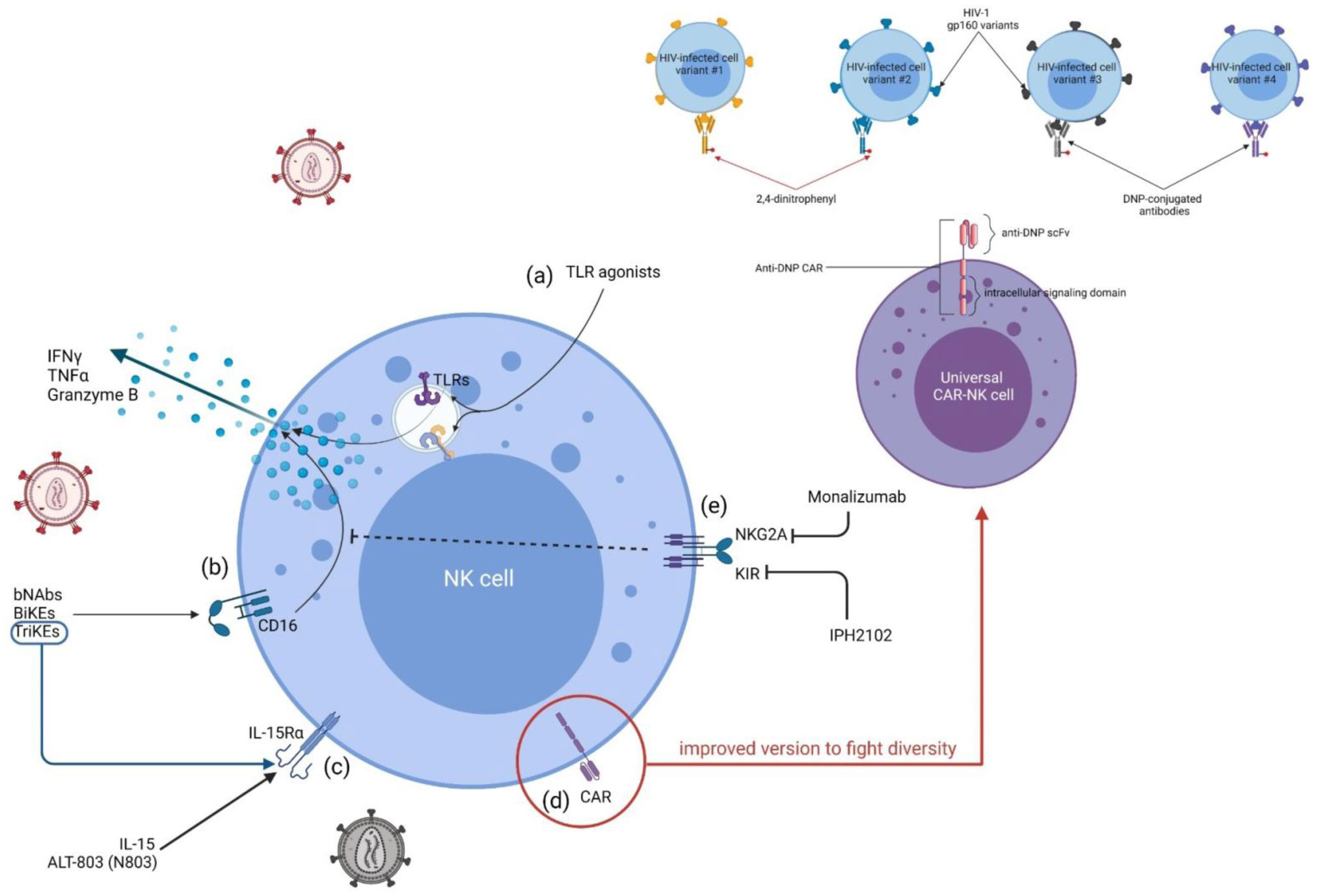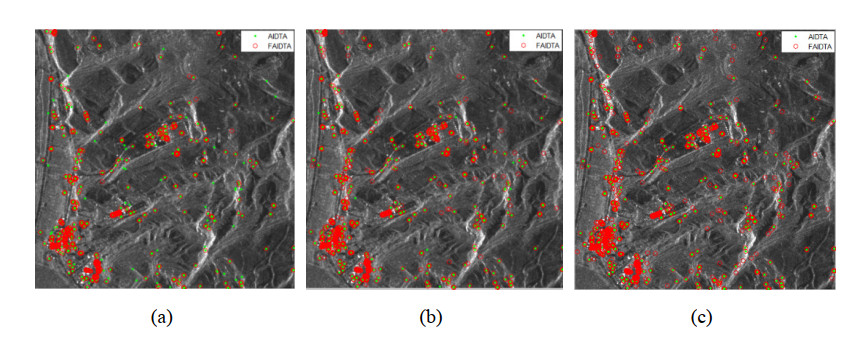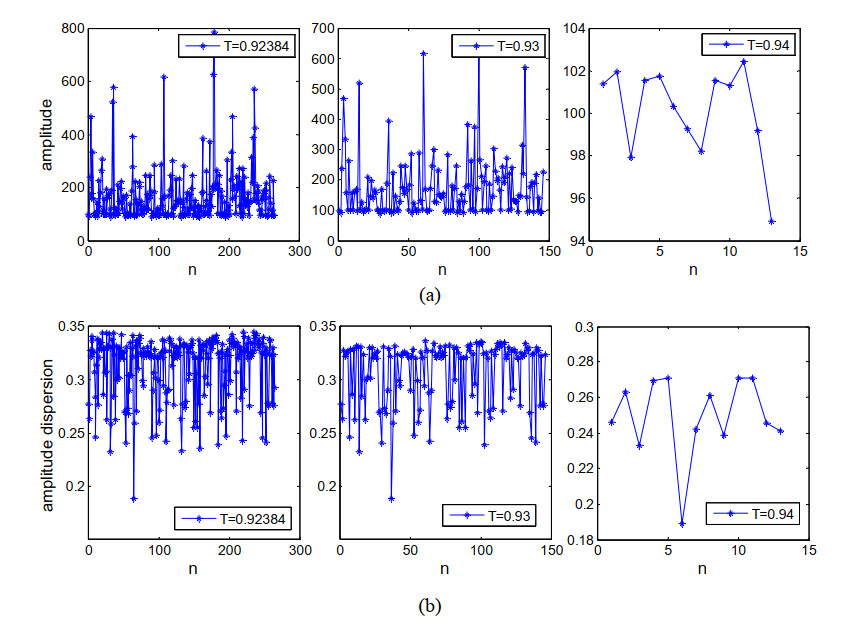|
[1]
|
R. M. Goldstein, C. L. Werner, Radar interferogram filtering for geophysical applications, Geophys. Res. Lett., 25 (1998), 4035-4038. doi: 10.1029/1998GL900033

|
|
[2]
|
T. Strozzi, U. Wegmuller, H. R. Keusen, K. Graf, A. Wiesmann, Analysis of the terrain displacement along a funicular by SAR interferometry, IEEE Geosci. Remote Sens. Lett., 3 (2006), 15-18 doi: 10.1109/LGRS.2005.855072

|
|
[3]
|
D. Raucoules, C. Colesanti, C. Carnec, Use of SAR interferometry for detecting and assessing ground subsidence, C. R. Geosci., 339 (2007), 289-302 doi: 10.1016/j.crte.2007.02.002

|
|
[4]
|
D. Li, M. Liao, Y. Wang, Progress of Permanent Scatterer Interferometry (in Chinese), Editorial Board Geomatics Inf. Sci. Wuhan Univ., 29 (2004), 664-668
|
|
[5]
|
G. Liu, X. Luo, Q. Chen, D. Huang, X. Ding, Detecting land subsidence in Shanghai by PS-networking SAR interferometry, Sensors, 8 (2008), 4725-4741 doi: 10.3390/s8084725

|
|
[6]
|
B. Osmanoğlu, T. H. Dixon, S. Wdowinski, E. Cabral-Cano, Y. Jiang, Mexico City subsidence observed with persistent scatterer InSAR, Int. J. Appl. Earth Obs. Geoinf., 13 (2011), 1-12. doi: 10.1016/j.jag.2010.05.009

|
|
[7]
|
C. Colesanti, S. Le Mouelic, M. Bennani, D. Raucoules, C. Carnec, A. Ferretti, Detection of mining related ground instabilities using the Permanent Scatterers Technique-A case study in the east of France, Int. J. Remote Sens., 26 (2007), 201-207
|
|
[8]
|
S. Heleno, L. G. S. Oliveira, M. J. Henriques, A. P. Falcã o, J. Lima, G. Cooksley, et al., Persistent scatterers interferometry detects and measures ground subsidence in Lisbon, Remote Sens. Environ., 115 (2011), 2152-2167
|
|
[9]
|
V. Tofani, F. Raspini, F. Catani, N. Casagli, Persistent Scatterer Interferometry (PSI) technique for landslide characterization and monitoring, Remote Sens., 5 (2013), 1045-1065. doi: 10.3390/rs5031045

|
|
[10]
|
Z. Sadeghi, M. Zoej, J. P. Muller, Combination of Persistent Scatterer Interferometry and Single-Baseline Polarimetric Coherence Optimisation to Estimate Deformation Rates with Application to Tehran Basin, PFG J. Photogramm. Remote Sens. Geoinf. Sci., 85 (2017), 327-340.
|
|
[11]
|
K. Shirani, M. Pasandi, Detecting and monitoring of landslides using persistent scattering synthetic aperture radar interferometry, Environ. Earth Sci., 78 (2019), 1-24. doi: 10.1007/s12665-018-7995-0

|
|
[12]
|
M. Youm, T. M. Timothy, S. Lee, H. Kim, Displacement Measuring of Coastal Area using PS-InSAR, J. Coastal Res., 91 (2019), 291-295. doi: 10.2112/SI91-059.1

|
|
[13]
|
A. Hopper, Persistent Scatterer Radar Interferometry for Crustal Deformation Studies and Modeling of Volcanic Deformation, Dissertation: Stanford University, 2005.
|
|
[14]
|
B. Kampes, Displacement Parameter Estimation using Permanent Scatterer Interferometry, Dissertation Delft University of technology, 2005.
|
|
[15]
|
A. Ferretti, C. Prati, F. Rocca, Nonlinear subsidence rate estimation using Permanent Scatterers in differential SAR interferometry, IEEE Trans. Geosci. Remote Sens., 38 (2000), 2202-2212. doi: 10.1109/36.868878

|
|
[16]
|
A. Ferretti, C. Prati, F. Rocca, Permanent Scatterers in SAR interferometry, IEEE Trans. Geosci. Remote Sens., 39 (2001), 8-20 doi: 10.1109/36.898661

|
|
[17]
|
Q. Chen, Y. Li, G. Liu, Comparison and Evaluation of Identification Methods of Permanent Scatterers in Radar Interferometry (in Chinese), Remote Sens. Inf., 4 (2006), 21-23
|
|
[18]
|
Q. Chen, G. Liu, Y. Li, X. Ding, Automated Detection of Permanent Scatterers in Radar Interferometry: Algorithm and Testing Results (in Chinese), Acta Geod. Cartographica Sin., 35 (2006), 112-117
|
|
[19]
|
B. Hu, H. Wang, L. Jia, Automatic detection of permanent scatteres in PSInSAR (in Chinese), Sci. Surv. Mapp., 36 (2011), 50-52
|
|
[20]
|
B. Kampes, N. Adam, Velocity field retrieval from long term coherent points in radar interferometric stacks, Proceedings of International Geoscience and Remote Sensing Symposium, IEEE cat. No. IGARSS2003, 2003.
|
|
[21]
|
B. Kampes, R. Hanssen, Ambiguity resolution for permanent scatterer interferometry, IEEE Trans. Geosci. Remote Sens., 42 (2004), 2446-2453. doi: 10.1109/TGRS.2004.835222

|
|
[22]
|
A. Hooper, H. Zebker, P. Segall, B. Kampes, A new method for measuring deformation on volcanoes and other natural terrains using InSAR persistent scatterers, Geophys. Res. Lett., 31 (2004), 1-5.
|
|
[23]
|
A. Hooper, P. Segall, H. Zebker, Persistent scatterer interferomet ric synthetic aperture radar for crustal deformation analysis, with application to Volcan Alcedo, Galapagos, J. Geophys. Res., 112 (2007), 400-407.
|
|
[24]
|
X. Luo, D. Huang, G. Liu, Automated Detection of Permanent Scatterers in Time Serial Differential Radar Interferometry (in Chinese), J. Southwest Jiaotong Univ., 42 (2007), 414-418
|
|
[25]
|
S. Azadnejad, Y. Maghsoudi, D. Perissin, Evaluation of polarimetric capabilities of dual polarized Sentinel-1 and TerraSAR-X data to improve the PSInSAR algorithm using amplitude dispersion index optimization, Int. J. Appl. Earth Obs. Geoinf., 84 (2020), 191950.
|
|
[26]
|
S. Long, T. Li, T. Feng, Study on Selection of PS point Targets (in Chinese), J. Geod. Geodyn., 31 (2011), 144-148.
|
|
[27]
|
Q. Tao, G. Liu, Identification and Selection of Persistent Scatterer Pixels from SAR Images, J. Appl. Scien., 27 (2009), 508-513.
|
|
[28]
|
A. Zadeh, Fuzzy sets, Inf. Control, 8 (1956), 338-353.
|
|
[29]
|
P. Balasubramaniam, V. P. Ananthi, Image fusion using intuitionistic fuzzy sets, Inf. Fusion, 20 (2014), 21-30. doi: 10.1016/j.inffus.2013.10.011

|
|
[30]
|
P. Biswas, B. B. Pal, A fuzzy goal programming method to solve congestion management problem using genetic algorithm, Decis. Making Appl. Manage. Eng., 2 (2019), 36-53.
|
|
[31]
|
S. Ganguly, Multi-objective distributed generation penetration planning with load model using particle swarm optimization, Decis. Making Appl. Manage. Eng., 3 (2020), 30-42.
|
|
[32]
|
G. R. Sensing, Gamma User's Guide, Differential Interferometry and Geocoding Software Version 1.2, GAMMA Remote Sensing AG, 2008.
|
|
[33]
|
X. Song, Fuzzy math theory and method, China Mining University Press, Xuzhou, China, 1999.
|
|
[34]
|
A. Lotfi, C. Tsoi, Learning fuzzy inference systems using an adaptive membership function scheme, IEEE Trans. Syst. Man Cybern. Part B, 26 (1996), 326-331. doi: 10.1109/3477.485884

|
|
[35]
|
Q. Su, L. Lai, P. Austin, A fuzzy dissolved gas analysis method for the diagnosis of multiple incipient faults in a transformer, APSCOM 2000-5th International Conference on Advances in Power System Control, Operation and Management, 2000.
|










 DownLoad:
DownLoad:










